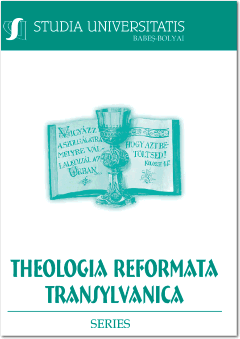RÓMA VAGY BIZÁNC? A KÉT RÍTUS TALÁLKOZÁSA A MAGYAR KERESZTYÉNSÉG ELSŐ SZÁZADAIBAN
ROME OR BYZANTIUM?THE ENCOUNTER OF THE TWO RITES IN THE FIRST CENTURIES OF HUNGARIAN CHRISTIANITY
Author(s): Olga LukácsSubject(s): Christian Theology and Religion, Theology and Religion, Islam studies, Comparative Studies of Religion, Religion and science , Sociology of Religion, History of Religion
Published by: Studia Universitatis Babes-Bolyai
Keywords: Christianization of Hungarians; Eastern rite; Eastern monasteries in Hungary; Christianity at the time of the Hungarian settlement.
Summary/Abstract: Rome or Byzantium?The Encounter of the Two Rites in the First Centuries of Hungarian Christianity. Historical sources prove that during the pre-conquest era the Byzantine mission had several impacts on Hungarians, which continued after their settlement in Pannonia as well. There are written sources on the existence of Byzantine Christianity only from the mid-10th century. The Gyula called Zombor has probably also gone to Constantinople in 953, his baptism being recorded by Ioannes Scylitzes as well. He returned home together with Hierotheos, a “proselytizing bishop”, whom Patriarch Theophylact of Constantinople (933–956) named “bishop of Turkey”, thus attempting to subject Turkey to his own authority.Due to the Christianizing activity of the bishop and his monks, Slavic-derived ecclesiastical words came into the Hungarian language with the help of the interpreters. Hierotheos lived in the court of Gyula, where he baptized his daughter, Sarolt and perhaps some of the courtiers. The hopeful mission was set back by the death of the old Gyula. History links taking up Western Christianity and Hungary joining the Western Christian states to Grand Prince Geza (ca. 972–997), the son of Grad Prince Taksony, and King Saint Stephen. The inflow of Western Christianity has not meant the suppression of the Eastern rite for a long time. This is also shown by the fact that we are aware of the existence of a series of Greek monasteries in Hungary in the time of King Saint Stephen and the following period.In the 11th–12th centuries, the two types of Christianity coexisted in Hungary in peace, the effects of the 1054 schism have not been felt in these centuries.The fast decline of the Eastern rite only started in the firstthird of the 13th century. One of the reasons was the formation of the Latin Empire of Constantinople in 1204, thus the Byzantine Latin Patriarchate was set up, which certainly weakened the position of the Greek Church in Hungary, and the other reason was the Fourth Council of the Lateran in 1215, which sought to place constraints on the Eastern rite.
Journal: Studia Universitatis Babeș - Bolyai Theologia Reformata Transylvanica
- Issue Year: 63/2018
- Issue No: 1
- Page Range: 111-122
- Page Count: 12
- Language: Hungarian

